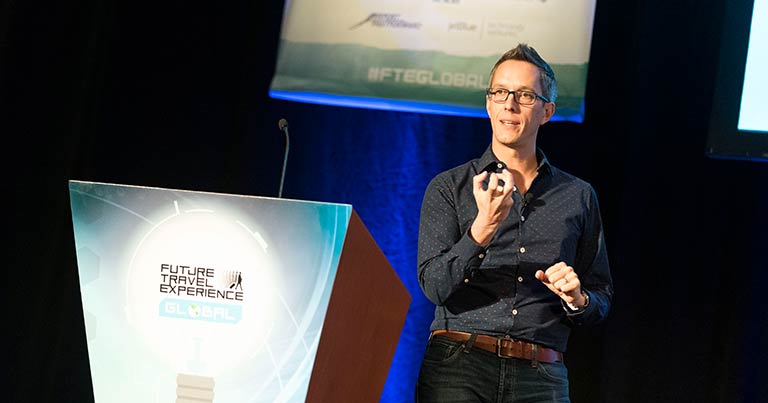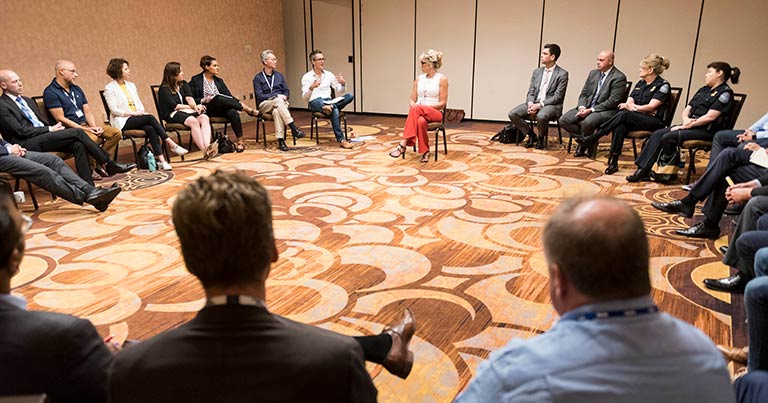
At Future Travel Experience Global 2018, British Airways Senior Design Manager Raoul Cooper led an invite-only “Jump Seat Debate” as part of an ongoing effort to explore and define the future role of biometrics technology in travel. During the session, a single chair (the Jump Seat) was placed at the front of the room. The remaining chairs were arranged in a semi-circle facing the Jump Seat. Raoul Cooper then introduced the topic and at any time any member of the audience was welcome to occupy the Jump Seat and voice their opinions. The discussion continued with participants frequently entering and leaving the Jump Seat. Here we highlight some key takeaways for the consideration of industry stakeholders.

1. Collaboration in designing the airport of tomorrow and the use of identity systems needs to involve a couple more parties, namely architects and behavioural scientists. It was reflected that the exact layout and flow of customers will change in the coming years with an expectation of queue-less flow through key check points – this will put strains on other parts of the passenger journey and present a challenge to airport infrastructure to adequately cope. This also alludes to future airport design needing to be modularised to allow for adaption of space and processes.
2. A clear Game Plan. With all the work going on with identity and use of biometrics there is potential to have an inconsistent message arriving at the doors of policy makers. We need to ensure we are aligned across our industry and that of others. There is a call to action for us all to ensure we work with standard and lobbying bodies to ensure consistency. Any new standards in this space need to have the bar set suitably high too.
3. Trust. Seen as a key area where we all need to work hard – we need to establish open and transparent working relationships to help drive the business case forward. Putting the customer at the centre of this is seen as an effective way of bringing all parties together. We cannot operate in silos of the process either, but look at the holistic journey – this in turn challenges our traditional procurement routes.
4. Responsibility. We need to be alert to our respective responsibilities as we develop new modes of operation with new technology sets. This will build credibility and trust with both the customer and the regulatory bodies. If the end result is a potential change to legislation or regulation, we must be able to demonstrate the reasons why with due diligence, accuracy and robustness.
Please feel free to leave your own comments in the comments section below.






